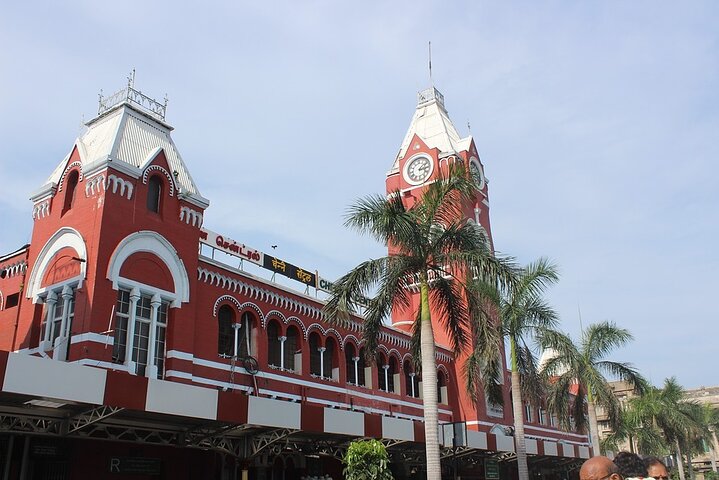Exploring Chennai’s Colonial Legacy: A Walk Through British Architecture
Embark on a captivating journey through Chennai’s colonial past with the British Architecture Walking Tour. Discover the intricate blend of British and Indian architectural styles that define this vibrant city.
A Journey Through Time: The British Legacy in Chennai
Chennai, a city that seamlessly blends the old with the new, offers a unique opportunity to explore its rich colonial past through the British Architecture Walking Tour. As someone who has always been fascinated by the intricate dance of cultures, I was eager to delve into the architectural marvels that stand as a testament to the British influence in this vibrant city.
The tour began at the iconic Chennai Central Railway Station, a bustling hub that has been a part of the city’s landscape since 1873. Designed in the Gothic Revival style, the station’s towering clock and intricate details immediately transported me back to a time when the British Empire was at its zenith. Walking through the station, I couldn’t help but marvel at how this architectural gem continues to serve as a vital artery for the city’s daily commuters.
Our next stop was the Ripon Building, a stunning example of the Indo-Saracenic style that characterizes much of Chennai’s colonial architecture. Named after Lord Ripon, a Governor-General known for his progressive policies, the building now serves as the office of the Mayor of Chennai. As I stood before its grand facade, I reflected on how this structure symbolizes the fusion of British and Indian architectural elements, a theme that would recur throughout the tour.
The Heart of Colonial Chennai
Continuing our journey, we arrived at the Southern Railway Headquarters, another masterpiece of Indo-Saracenic design. Completed in 1921, this building was among the first in India to utilize reinforced concrete, a testament to the innovative spirit of the era. As I admired its elegant arches and domes, I was reminded of the architectural wonders I had encountered in my travels across Asia, each telling its own story of cultural exchange and adaptation.
The Victory War Memorial, formerly known as Cupid’s Bow, was our next destination. This solemn monument commemorates the sacrifices of soldiers during the World Wars, serving as a poignant reminder of the turbulent history that shaped the modern world. Standing in its shadow, I felt a deep sense of gratitude for the peace and prosperity we enjoy today, a sentiment that resonated with my own experiences of cultural understanding and collaboration.
Our exploration of colonial Chennai would not have been complete without a visit to Fort St. George, the first English fortress in India. Established in 1644, the fort houses St. Mary’s Church, the oldest Anglican church in the country, and a museum rich with relics from the colonial era. As I wandered through its halls, I was struck by the enduring legacy of the British presence in Chennai, a city that has embraced its past while forging a path towards a vibrant future.
Bridging the Past and Present
The final leg of our tour took us to the Napier Bridge, a striking structure that spans the River Cooum. Built in honor of Lord Napier, a former Governor of Fort St. George, the bridge is a marvel of engineering and design. As I walked across its length, I was captivated by the panoramic views of the city, a reminder of the dynamic interplay between history and modernity that defines Chennai.
Our journey concluded at the Senate House, the administrative center of the University of Madras. Constructed in the late 19th century, this building is considered one of the finest examples of Indo-Saracenic architecture in India. As I stood on its steps, overlooking the bustling Marina Beach, I felt a profound connection to the city’s rich heritage and the enduring spirit of its people.
Reflecting on my experience, I realized that the British Architecture Walking Tour offered more than just a glimpse into Chennai’s colonial past. It was a journey of discovery, a chance to appreciate the intricate tapestry of cultures that have shaped this remarkable city. For those who seek to understand the complexities of history and the beauty of cultural fusion, this tour is an unforgettable experience.











































